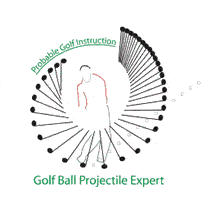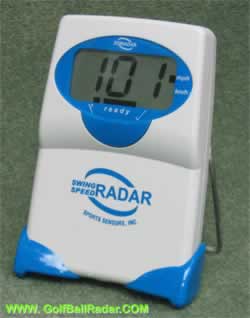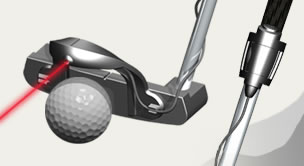
|
|
|
Golf Playing LessonsFrom this page, you can access playing lessons for various parts of the game. Click on the topics below and you'll be taken to the appropriate place in the website. Look below the navigation menu (the one below this sentence) for the specific page's content.
|
Distance |
30
yd |
40
yd |
50
yd |
60
yd |
70
yd |
80
yd |
90
yd |
60
degree |
1/2:
full |
1/2:
2 in |
3/4:
full |
3/4:
2 in |
/ |
/ |
/ |
50
degree |
/ |
/ |
/ |
/ |
3/4:
full |
3/4:
1 in |
3/4:
2 in |
Using a 60 degree without opening the clubface, I use a half swing to fly the ball 30 yards. I choke down fully on the grip. This shot already flies fairly high. If I wanted to hit the ball even higher, I would simply open the clubface. The more I open the clubface, the higher and shorter the ball flies and the softer it lands.
You'll need to experiment yourself with how far each shot travels with a certain degree of open clubface. I wouldn't try to deal with more than 3 amounts of openness: just a little, medium and maximum. You'll quickly find out your maximum amount of openness. Once the shots become quite inconsistent, you've surpassed your maximum amount.
I usually find that the standard wedge shots with the 60 degree highlighted in the table above give my balls enough height most of the time. But on those occasions when I do need more height and a softer shot, it's nice to have the consistent, confident swing and just open the clubface a little and choke down on the club a little less. I find having this shot in my bag saves me numerous shots.
Very few players at my own club are able to hit a lob shot. I'm sure my club is fairly representative of most. I think the real problem lies with golfers trying to be too wristy, instead of keeping the the wrists soft. As well, they try to help the ball up instead of allowing the loft of the club do the lifting work.
Lack of practice also plays a major roll. I see very few golfers practicing their short games. Most spend most practice time, if any, hitting balls on the range. Recall what I said earlier in this series, the short game makes up a very large percentage of the shots. Don't neglect it!
If you have any questions to clarify the method that I use for lob shots, feel free to send me an email and I'll do my best to answer.
Next time, my newsletter topic will begin to deal with statistics in golf. What is an average golfer? How does a good, low amateur compare to a PGA Tour pro? How does one use knowledge about their own golf statistics to lower their score?
If you have any questions or comments, feel free to email me at golfexpert@probablegolfinstruction.com
©Probable Golf Instruction, Ken Tannar 2001-2010. All Rights Reserved.
Langley, B.C. V2Y 2G4Phone: 604-539-7760 FAX: to fax, email an attachment
probablegolf@yahoo.ca or golfexpert@probablegolfinstruction.com
| GOLF SOFTWARE |
|
Power Meter measures Swing Speed
|
| GOLF NEWS |
|
| GOLF NEWSLETTER |
Statistics
·Putting
·Long Balls
·Games
·Handicap
·Scoring
·Shot Patterns
·Tournaments
·Tours
Pro Shop
·Ball Marker Engraved
·Books
·CDs & DVDs
·Green Reader
·Impact Labels
·Laser Rangefinder
·Longer Drives
·Products
·Teaching Aids
|
Subscribe to the Probable Golf Newsletter
and
|
| GOLF POLL |
The 19th Hole
·Advertising
·Ask the Golf Expert
·Consultation/Litigation
·FAQs
·Golf Blog
·Golf Draws
·Links
·Science of Golf
·Tell a Friend
·Testimonials
·

Golf Ball Finder Glasses
·
| GOLF CARTOON |






